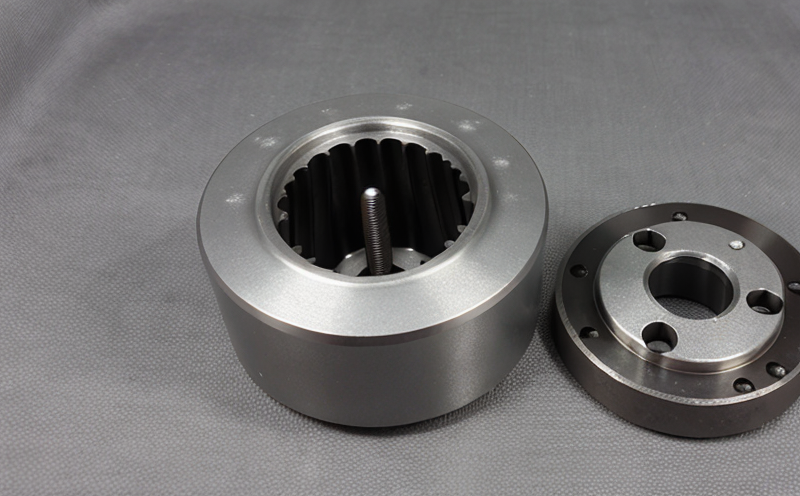ASTM E45 Inclusion Content in AM Steels
The ASTM E45 standard provides a comprehensive framework to evaluate and characterize inclusions within metallic materials. This service focuses on the specific application of ASTM E45 for additive manufactured (AM) steels, where inclusions can significantly impact material properties and performance.
Additive manufacturing techniques such as Laser Beam Melting (LBM), Electron Beam Melting (EBM), and Direct Metal Laser Sintering (DMLS) allow for the production of complex geometries with precise control over microstructure. However, these processes can introduce various types of inclusions into the metal matrix, including oxides, sulfides, silicates, and nitrides.
ASTM E45 defines a set of methods to quantify and classify these inclusions based on their size, shape, morphology, and composition. The standard is widely recognized for its detailed guidance on sample preparation, imaging techniques, and analysis protocols to ensure accurate and repeatable results. In the context of AM steels, this service ensures that manufacturers can meet stringent quality control requirements, thereby enhancing product reliability.
Sample preparation plays a critical role in ASTM E45 compliance. For AM steels, the process involves careful selection of cross-sections to represent the microstructure accurately. Once prepared, these sections are imaged using advanced microscopy techniques such as scanning electron microscopy (SEM) and energy-dispersive X-ray spectroscopy (EDX). These tools provide high-resolution images and elemental analysis, which are essential for identifying and classifying inclusions according to ASTM E45 criteria.
The classification of inclusions based on ASTM E45 involves several key parameters. Size is typically measured as the diameter or length-to-width ratio, while shape can be categorized into simple geometric forms such as spheres, ellipsoids, and plates. Morphology refers to the arrangement of particles within the matrix, which can influence how they interact with light during imaging. Composition analysis using EDX helps determine the chemical makeup of each inclusion type, providing insights into their potential origins.
The acceptance criteria outlined in ASTM E45 are stringent and ensure that materials meet specified limits for different types of inclusions. These criteria vary depending on the intended use of the metal component; stricter limits apply to critical applications such as aerospace or medical devices where material integrity is paramount.
By adhering to ASTM E45, manufacturers can demonstrate compliance with industry standards and regulations, which is crucial for gaining market access in competitive sectors like automotive and defense. The service also supports research and development efforts by providing detailed data on inclusion behavior under various process parameters, enabling optimization of AM processes.
The importance of this service extends beyond mere compliance; it contributes to the overall quality assurance strategy by identifying potential issues early in the production cycle. This proactive approach helps prevent costly rework or scrap, ensuring that only high-quality parts reach final assembly stages.
Benefits
The benefits of ASTM E45 inclusions testing for AM steels are multifaceted and extend across several dimensions:
Enhanced Material Integrity: Ensuring that inclusions do not exceed acceptable limits improves the mechanical properties and durability of components, reducing the risk of failure.
Regulatory Compliance: Meeting ASTM E45 standards allows manufacturers to satisfy regulatory requirements, opening doors to international markets and maintaining a strong competitive edge.
Risk Mitigation: Early detection of problematic inclusions through rigorous testing minimizes the likelihood of defects reaching end users, protecting both reputation and customer satisfaction.
Innovation Support: Accurate data on inclusion characteristics can guide continuous improvement initiatives aimed at optimizing AM processes and developing new alloys tailored to specific applications.
Cost Efficiency: By preventing substandard materials from entering the supply chain, this service helps avoid costly errors downstream in manufacturing or assembly processes.
Eurolab Advantages
At Eurolab, our commitment to excellence sets us apart as a premier provider of ASTM E45 testing services for AM steels. Our advantages include:
Experienced Experts: Our team comprises highly skilled metallurgists and materials scientists who possess deep knowledge in both additive manufacturing technologies and traditional metalworking practices.
State-of-the-Art Facilities: Equipped with the latest microscopy equipment, we offer advanced imaging capabilities that deliver precise measurements and detailed analyses of inclusion characteristics.
Dedicated Research Support: Beyond routine testing, Eurolab offers custom research solutions to explore how different process variables affect inclusion formation in AM steels.
Comprehensive Reporting: Our reports are thorough and transparent, providing clear insights into every aspect of the ASTM E45 analysis, backed by detailed images and quantitative data.
Quality and Reliability Assurance
At Eurolab, quality and reliability assurance are integral to our approach. Here’s how we ensure consistent high standards:
Standard Operating Procedures: We follow ISO/IEC 17025 accredited procedures, ensuring that all tests are conducted under controlled conditions for repeatability and reproducibility.
Continuous Improvement: Our quality management system is regularly reviewed and updated to incorporate new methodologies and technologies as they emerge in the field of materials science.
Customer Collaboration: We engage closely with clients throughout the testing process, offering guidance on sample preparation and interpretation of results to optimize outcomes.
Third-Party Audits: Regular audits by independent bodies ensure that our practices meet international standards without compromise.





